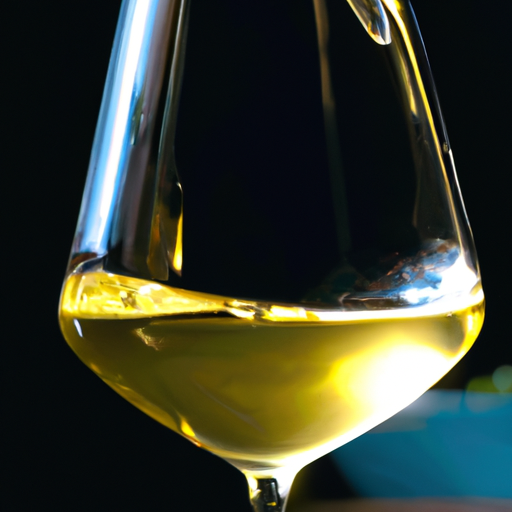
The History and Origins of White Wine
White wine has a rich history that dates back thousands of years. It is believed to have originated in ancient Mesopotamia, where the first evidence of winemaking can be traced. The process of making white wine involves fermenting the juice of white grapes, which gives it its distinct color and flavor.
The ancient Greeks and Romans were known for their love of wine, and they played a significant role in spreading the cultivation of grapes and the art of winemaking throughout Europe. White wine became particularly popular in regions with cooler climates, such as Germany and France, where the grapes used to make white wine thrived.
In the Middle Ages, white wine gained popularity among the nobility and clergy. Monasteries played a crucial role in preserving and advancing winemaking techniques, and they were responsible for producing some of the finest white wines of the time. The monks carefully selected and cultivated grape varieties that were best suited for white wine production, and their knowledge and expertise were passed down through generations.
During the Renaissance, white wine became a symbol of wealth and status. It was often served at lavish banquets and feasts, and its popularity continued to grow. The invention of the printing press in the 15th century allowed for the dissemination of winemaking knowledge, leading to further advancements in the production of white wine.
In the 18th and 19th centuries, white wine production expanded to the New World, particularly in regions such as California, Australia, and South Africa. These regions offered ideal conditions for growing white grape varieties, and their wines quickly gained recognition for their quality and unique characteristics.
Today, white wine is produced in various countries around the world, each with its own distinct style and flavor profile. The most famous white wine regions include Burgundy in France, where Chardonnay is the dominant grape variety, and the Mosel region in Germany, known for its aromatic Rieslings.
White wine can be made from a wide range of grape varieties, each contributing its own unique flavors and aromas. Some of the most popular white grape varieties include Chardonnay, Sauvignon Blanc, Riesling, and Pinot Grigio. These grapes can be grown in different climates and soil types, resulting in a diverse range of white wines.
The production of white wine involves several steps, including harvesting the grapes, crushing them to extract the juice, and fermenting the juice with yeast. The fermentation process can take anywhere from a few weeks to several months, depending on the desired style of wine. After fermentation, the wine is aged in barrels or tanks to develop its flavors and aromas further.
White wine is known for its refreshing and crisp characteristics, making it a popular choice for warm weather and lighter meals. It pairs well with a variety of foods, including seafood, poultry, and salads. The acidity and fruitiness of white wine can help balance out rich and creamy dishes, making it a versatile option for pairing with different cuisines.
In conclusion, white wine has a long and storied history that spans centuries. From its origins in ancient Mesopotamia to its global popularity today, white wine continues to captivate wine enthusiasts with its diverse flavors and aromas. Whether you’re a beginner or a seasoned wine connoisseur, exploring the world of white wine is a journey worth embarking on.
Understanding Different Varieties of White Wine

White wine is a popular choice among wine enthusiasts, and for good reason. With its refreshing and crisp flavors, it is the perfect accompaniment to a variety of dishes and occasions. However, for beginners, the world of white wine can be overwhelming. With so many different varieties to choose from, it can be difficult to know where to start. In this section, we will explore the different varieties of white wine, helping you to understand their unique characteristics and flavors.
One of the most well-known varieties of white wine is Chardonnay. This versatile grape is grown in many regions around the world and produces a wide range of styles. Chardonnay can be oaked or unoaked, resulting in different flavor profiles. Oaked Chardonnays tend to have a rich and buttery taste, while unoaked Chardonnays are lighter and more fruit-forward. Chardonnay pairs well with a variety of foods, including seafood, poultry, and creamy sauces.
Another popular white wine variety is Sauvignon Blanc. Known for its vibrant and zesty flavors, Sauvignon Blanc is often described as having notes of citrus, tropical fruits, and herbs. This wine is typically unoaked, allowing its natural acidity to shine through. Sauvignon Blanc pairs well with lighter dishes such as salads, seafood, and goat cheese.
Riesling is a white wine variety that is often misunderstood. Many people associate Riesling with sweetness, but it can actually range from bone-dry to very sweet. Riesling is known for its high acidity and aromatic qualities, with flavors that can include green apple, peach, and honey. This wine pairs well with spicy foods, as its sweetness can help to balance out the heat.
If you prefer a lighter and more delicate white wine, you may enjoy Pinot Grigio. This Italian variety is known for its crisp and refreshing flavors, with notes of citrus, pear, and melon. Pinot Grigio is typically unoaked, allowing its natural flavors to shine through. This wine pairs well with lighter dishes such as salads, seafood, and light pasta dishes.
For those who enjoy a slightly sweeter white wine, Moscato is a great choice. This Italian variety is known for its floral and fruity aromas, with flavors that can include peach, apricot, and orange blossom. Moscato is typically low in alcohol and pairs well with spicy foods, fruit-based desserts, and soft cheeses.
Lastly, Gewürztraminer is a white wine variety that is known for its intense and aromatic flavors. This wine often has notes of lychee, rose petals, and spice. Gewürztraminer pairs well with spicy Asian cuisine, as its sweetness can help to balance out the heat.
In conclusion, understanding the different varieties of white wine is key to finding the perfect bottle for your taste preferences. Whether you prefer a rich and buttery Chardonnay, a zesty Sauvignon Blanc, or a sweet Moscato, there is a white wine out there for everyone. By exploring the unique characteristics and flavors of each variety, you can expand your wine knowledge and enhance your enjoyment of this popular beverage. So go ahead, grab a glass of white wine and start exploring the wonderful world of flavors that await you.
Tips for Pairing White Wine with Food
When it comes to pairing white wine with food, there are a few key tips to keep in mind. White wine can be a versatile and refreshing choice that complements a wide range of dishes. Whether you’re hosting a dinner party or simply enjoying a meal at home, understanding how to pair white wine with food can enhance your dining experience.
One important factor to consider when pairing white wine with food is the acidity of the wine. Acidity in white wine can help to cut through rich and fatty foods, balancing out the flavors and cleansing the palate. For example, a crisp and acidic Sauvignon Blanc can be a great choice to pair with seafood dishes, as the acidity of the wine can help to enhance the flavors of the fish.
Another factor to consider is the sweetness of the wine. Sweeter white wines, such as Riesling or Moscato, can pair well with spicy or Asian-inspired dishes. The sweetness of the wine can help to balance out the heat and spice, creating a harmonious combination of flavors. Additionally, sweeter white wines can also be a great choice to pair with desserts, as they can complement the sweetness of the dish.
When it comes to pairing white wine with cheese, there are a few general guidelines to follow. Light and fresh white wines, such as Pinot Grigio or Chardonnay, can pair well with soft and creamy cheeses, such as Brie or Camembert. The acidity of the wine can help to cut through the richness of the cheese, creating a balanced and enjoyable pairing. On the other hand, aged and more intense white wines, such as Chardonnay or Viognier, can pair well with stronger and more flavorful cheeses, such as Gouda or Roquefort.
It’s also important to consider the flavors and ingredients of the dish when pairing white wine with food. For example, if you’re serving a dish with citrus flavors, such as a lemon chicken or a citrus salad, a white wine with citrus notes, such as a Sauvignon Blanc or a Chenin Blanc, can be a great choice. The citrus flavors in the wine can complement and enhance the flavors of the dish.
Lastly, don’t be afraid to experiment and try new combinations. While there are general guidelines to follow when pairing white wine with food, everyone’s palate is different, and what works for one person may not work for another. It can be fun to explore different pairings and discover your own personal preferences. Keep in mind that the most important thing is to enjoy the wine and the food, so trust your own taste buds and have fun with the process.
In conclusion, pairing white wine with food can be a delightful and rewarding experience. By considering factors such as acidity, sweetness, and flavors, you can create harmonious and enjoyable combinations. Remember to trust your own taste buds and don’t be afraid to experiment. With these tips in mind, you’ll be well on your way to becoming a white wine pairing expert. Cheers!






